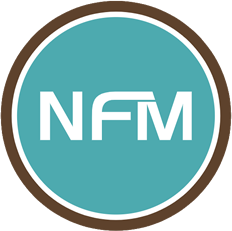If your giving report is just a spreadsheet of numbers, you’re missing the point. Here’s what to include in a church giving report that builds trust, shows impact, and inspires continued support.
1. A Personal, Purpose-Driven Intro (Not Just a Header)
Start with a short note from your pastor or finance team — and keep it human.
This isn’t the place for jargon or filler. Just be honest, clear, and grateful.
What to say:
- Thank your members for their giving
- Share a sentence or two about the mission of the church
- Explain why you’re sharing this report — not as a formality, but as a reflection of stewardship and trust
Example:
“We believe giving is sacred — and how we manage those gifts matters. This report is a way to keep you informed, involved, and confident that your support is making a real difference.”
2. Income Breakdown (Tell the Full Story of How Money Comes In)
Show exactly where your church’s money is coming from. Break it down by source — don’t just drop a lump sum.
What to include:
- Tithes and offerings
- Special collections (e.g., building fund, mission trips)
- Fundraising events
- Rental or space-use income
- Grants, sponsorships, or outside donations
Use a simple table and a pie chart if possible. Keep it visual, not just numeric.
Pro Tip: Label everything clearly. “$10,200 – General Tithes” is better than “Income Line 1.”
3. Expense Breakdown (Show Exactly Where the Money Went)
This is where most churches get too vague. Don’t just say “Operations” — break it down.
What to include:
- Salaries and benefits (for transparency, list as a total)
- Utilities and facility expenses (electricity, water, rent/mortgage)
- Ministry and program expenses (youth ministry, Bible studies, events)
- Outreach programs (food pantry, shelter support, education initiatives)
- Technology and communications (AV, website, online tools)
- Admin costs (office supplies, insurance, bookkeeping)
Add visuals again if you can — a pie chart or stacked bar is perfect.
Tip: Members want to see that money is being used wisely, not just spent. Add a short note on anything unexpected (e.g., “Facility repairs after flooding — $1,800”).
4. Budget vs. Actual Comparison
This helps people understand how the church is managing money vs. what was originally planned.
| Category | Budgeted | Actual | Difference |
| Tithes & Offerings | $50,000 | $47,200 | -$2,800 |
| Ministry Expenses | $18,000 | $16,450 | -$1,550 |
| Outreach | $10,000 | $12,300 | +$2,300 |
If you went over or under in any area, give a one-sentence explanation. No spin. Just the facts.
5. Ministry Highlights (Connect the Money to the Mission)
Now it’s time to show what actually happened because people gave.
Use bullet points, images, or sidebars to spotlight ministry wins from the quarter.
Examples:
- 200 meals served through the food bank
- 25 teens attended the youth retreat — 90% covered by donations
- Launched new Bible study with 3 small groups
- Roof repairs completed — paid in full
Optional: Insert photos or short quotes from ministry leaders or volunteers.
6. Impact Stories or Testimonials
A dollar amount is one thing. A changed life? That’s what sticks.
Include one short story about a real person (with their permission) who benefited from the church’s ministry.
Example:
“This church gave me and my kids a place to land when we had nothing. The food program helped us get through the worst of it. I’ve never felt more supported by a church.” – Angela, member since 2021
Make it human. Make it real. Just one or two paragraphs is enough.
7. Financial Snapshot (Savings, Debt, Giving Trends)
Let members see the big picture. A quick table or summary like this can help:
- Savings / reserve fund balance
- Current outstanding debt (if any)
- Last 3 quarters of giving totals — shown as a trend
This helps your more financially-minded members see that your church is being strategic and responsible.
8. What’s Ahead + What You Need
Your giving report isn’t just about what happened — it’s also a chance to talk about what’s next.
Share:
- What goals or projects are coming up
- What kind of funding is needed (specific dollar amount if possible)
- A simple call to action: become a monthly giver, volunteer, attend an event, etc.
Be honest about the need — and confident in the mission.
9. How to Give + Say Thanks
End with gratitude and a practical next step.
Include:
- Online giving lin
- Text-to-give number (if you have one)
- Mailing address for checks
- Volunteer contact info
- Social media handles or newsletter signup
Then thank them. Don’t just say it. Mean it.
“We don’t take your giving lightly. Your generosity is fueling real ministry work every single day — and we’re deeply grateful.”
Final Thoughts
Churches don’t need fancy consultants or software to build trust around money. They need to be honest, clear, and consistent.
When people see where their money is going — and who it’s helping — they give more. They give consistently. And they feel like real partners in the work.
So if you’ve never shared a quarterly or annual giving report — now’s the time.
And if you’ve been doing them but not getting the response you want — upgrade the way you tell the story.
Your members deserve to see the impact of their giving.
Free Download: Ready-to-Use Giving Report Template
Need a head start? Download our Editable Quarterly Giving Report Template to plug in your numbers, tell your story, and present your report with confidence.

